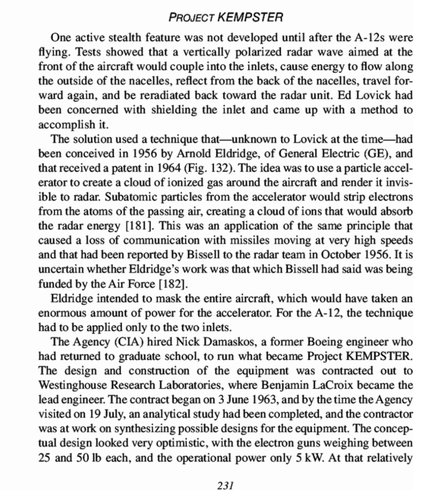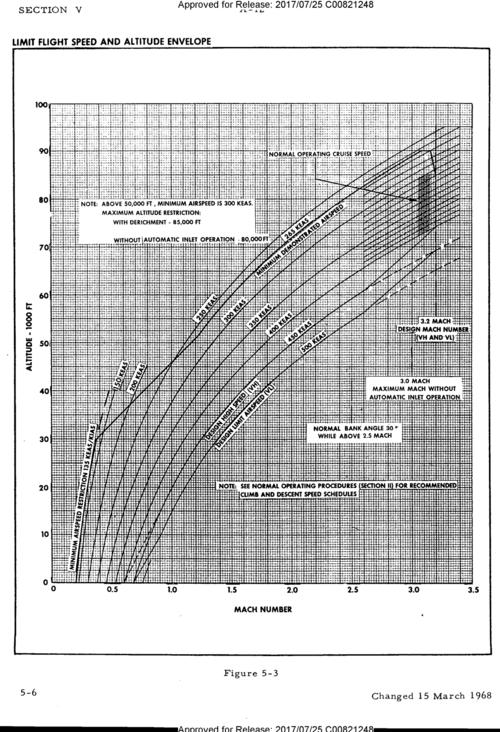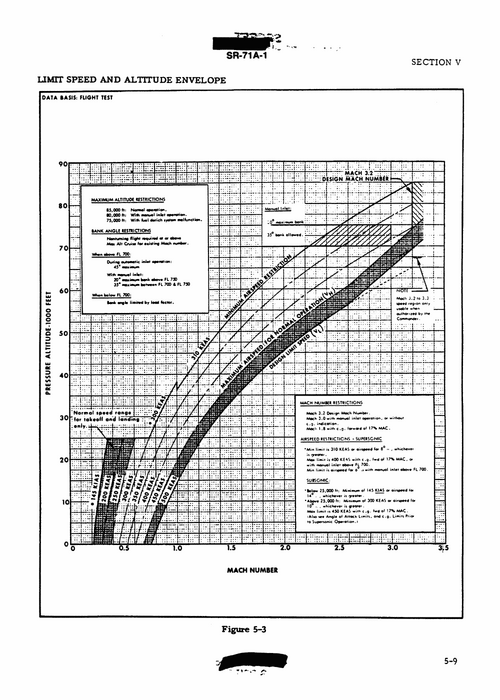- Joined
- 6 August 2007
- Messages
- 3,888
- Reaction score
- 5,924
So your contention is that:The photo below was taken about 5 years after the start of the Blackbird's test program and I'm unaware of any revolutionary advances in tracking or photography that occurred in the interim. The subject vehicle is somewhat larger but is moving faster (6,164 mph) and at higher altitude (220,000 ft.) than the Blackbird family is generally believed capable of.
1) It's not just somewhat larger, it's a *lot* larger.
2) The vehicle isn't approaching from the dim vague distance, but was clearly observed from the beginning, RIGHT OVER THERE, with massive camera tracking rigs built for the purpose.
3) Launch vehicles go up and over, not more or less purely horizontal. That Saturn V isn't visible low in the sky, but *high* in the sky. Far less air to look through than something lower-yet-closer but closer tot he horizon.
4) Launch vehicle trajectories are pre-programmed; but whenever there's a divergence the manual trackers tended to lose them almost instantly.
5) Launch vehicles were painted *white* in large part so that they could be clearly seen. Look at the bottom of the Saturn V S-IC stage in your photo: it's dark... and essentially the same color as the background. All that you can see of the Saturn V is what's painted white; the black bits are truly invisible.
In order to be seen for a 1965 speed record run, a YF-12A was painted with a white cross. Without it, it would have been damned difficult to see at altitude.

Before assuming some whackaloon conspiracy about the SR-71 family using "plasma stealth" or some such rubbish as an excuse for why it hasn't been photographed... find some photos of the U-2/TR-1 at altitude. Roughly the same color as the SR-17, roughly the same size (TR-1 span 103 feet, SR-71 length 107 feet), but flies a little lower (70K vs 85K) and a *lot* slower. Should be vastly easier to spot and photograph. Go ahead, look 'em up. Should be oodles of them.
So your contention is that:
1. It was possible (in 1965) to track a Blackbird at speed and altitude when the aircraft was marked with a large white cross
2. This was done to support a speed record run
3. It's ridiculous to suppose that the same measures would be used to photographically document the airplane in its intended operational speed and altitude during it's test flight program. After spending billions of dollar and pushing many technologies into unprecedented territory. Because spyplanes fly low on the horizon and you couldn't pre-program a test flight to pass over a camera on schedule.
4. Suggestions that the USG might wish to restrict photos of a CIA-sponsored spyplane performing at a speed and altitude unreachable by any other aircraft, because they might reveal something of the technology employed are "whackadoodle".
Sorry, I lost your line of reasoning there somewhere.
BTW, you introduced "plasma-sheath" into the conversation.
We have famous pictures like the one shot from one SR-71 while crossing the path of another above the Pacific at Mach 3.
We also have the M-21 camera shot.
We also have the ejection sequence filmed from the ground.
However, the A-12 high speed early flights should be interesting to see (plasma stealth?).

The lack of photographic evidence is noteworthy...
Thanks for your insights and for the fruits of your towering intellect.So your contention is that:
1. It was possible (in 1965) to track a Blackbird at speed and altitude when the aircraft was marked with a large white cross
2. This was done to support a speed record run
3. It's ridiculous to suppose that the same measures would be used to photographically document the airplane in its intended operational speed and altitude during it's test flight program. After spending billions of dollar and pushing many technologies into unprecedented territory. Because spyplanes fly low on the horizon and you couldn't pre-program a test flight to pass over a camera on schedule.
4. Suggestions that the USG might wish to restrict photos of a CIA-sponsored spyplane performing at a speed and altitude unreachable by any other aircraft, because they might reveal something of the technology employed are "whackadoodle".
Sorry, I lost your line of reasoning there somewhere.
1: Correct.
2: Duh.
3: Incorrect.
4: Incorrect.
See what happens when you dream up strawmen and say "so your contention is..." rather than asking for clarification on points you clearly don't understand?
BTW, you introduced "plasma-sheath" into the conversation.
No, I didn't. Do a ctrl-F search for "plasma" and see where it pops up first.
Looking forward to your photos of the U-2 at altitude.
Thanks for your insights and for the fruits of your towering intellect.

Seems they flew three U-2 missions from Charbatia to Lop Nor and back, circa 1964. From memory, with ROCAF pilots.
>snip lots of good stuff<
The Blackbirds ultimately earned their nickname because they were coated with a high-emissivity black paint for improved heat radiation, thus reducing thermal stresses on the airframe. Although the first A-12 flew unpainted, engineers soon realized it would be advantageous to exploit Kirchoff’s law of Radiation that describes how a good heat absorber, such as any extremely dark object, is also an efficient heat emitter. Although convective heating decreases with increasing altitude, heat radiation occurs independently of altitude. Initial efforts involved application of black paint only to the airplane’s edges and cockpit area. The earliest paint scheme used on the A-12, AF-12 (YF-12A), and M-21, and intended for use on the R-12 (SR-71), involved painting the periphery black and leaving the rest of the airframe natural metal. Beginning in late 1963, however, Skunk Works engineers began painting the A-12 fleet and subsequent variants entirely black. This improved heat emission and made the airplanes less visible from the ground since they no longer strongly reflected the sun during high-altitude flight.
The F-12B is one of those great, "might have beens". (Not sure how practical it would have been to use them to escort Bears though.)Nice one. Also 120 mile front aspect detection range for an SR-71 from an YF-12.


‘Noteworthy, JP7 production caused a nationwide shortage of bug spray,’ says our friend Linda Sheffield Miller (Col Richard (Butch) Sheffield’s daughter, Col. Sheffield was an SR-71 Reconnaissance Systems Officer) on her Facebook Page Habubrats.
[...]
Sheffield Miller explains;
‘Shell Oil developed JP-7 in 1955. Company vice president Jimmy Doolittle arranged for Shell to develop the fuel for the Central Intelligence Agency (CIA) and United States Air Force’s (USAF) secret Lockheed U-2 spy plane, which needed a low-volatility fuel that would not evaporate at high altitude. Manufacturing several hundred thousand gallons of the new fuel required the petroleum byproducts Shell normally used to make its Flit insecticide, causing a nationwide shortage of that product!
‘One of the ingredients in JP7 just so happened to be a crucial part of Flit mosquito repellant. Bearing in mind the huge amount of fuel we’re talking about here, Shell didn’t exactly have enough supply to meet the newly increased demand, so mosquitos everywhere caught a lucky break!’





Interesting story, but hard to verify if true. I lived near Greenham Common at the time the SR71 visited for the International Air Tattoo (it was 1983, not 1985 as suggested in the link above, the IAT moved to Fairford from 1985). I was 14 in 1983, so at school at the time and remember the Blackbird's approach being visible from the classroom I was in on the day it arrived - it came around before landing so we saw the approach with gear down twice - it was not a productive lesson for the teacher!
Blackbird’s Revenge
A while back, I came across a fantastic recollection from a former SR-71 pilot of the United States Air Force about his experience at an airshow in England in the 1980s. It’s just too good no…tacairnet.com
Blackbird washes protesters with afterburner pull up blast.
There's a book on the SR-71 that I bought back in the 1990s where I distinctly recall reading that the uppermost possible speed for the Blackbird was Mach 3.7 due to its' air intake geometry.


Lockheed's legendary SR-71 may hold the record for being the fastest production jet in history, but more than a year before the first Blackbird took flight, President Lyndon Johnson was already revealing the YF-12 to the world... An aircraft that promised to be the fastest intercept fighter the world has ever seen.
Let's talk about what the F-12 could have been, and why revealing it was actually part of a broader ploy to keep the A-12 and SR-71 under wraps.
